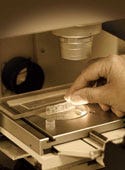Five Ways to Ensure a Successful Tubing Project
TUBING
September 1, 2009
|
(Photos courtesy of VESTA) |
The medical device industry continues to grow, but at the same time its supply chains are consolidating. The challenge is to deploy outsourcing strategies that bring value to a company today without adding future risk. With cost pressures forcing companies to look for new ways to compete, now may be a good time to assess tubing vendor relationships.
Evaluating and selecting tubing partners requires scrupulous review. The best opportunity for success begins with a solid plan to determine needs and identify the most appropriate short- and long-term partners. This article discusses five points a company can use as a discussion guide to ensure that it is strategically aligned with its tubing vendors.
1. Define Quality Expectations
Quality has become such a buzzword that it seems to have lost its significance. Most organizations say that quality is a top priority, and many have mission statements that allege as much, but some company's actions may indicate otherwise, even if the managers have the best intentions.
Sidebar: Quality at a Glance |
Because the definition of quality can vary so drastically within and between organizations, a company should discuss the meaning with its personnel, business partners, and suppliers. Quality can be product specific, service related, and systems based. For example, to a purchasing manager, quality could mean finding the lowest-priced raw materials. However, the manager may not realize how these choices will affect product performance if the vendor does not point out the tradeoffs that were made to reduce pricing. A quality manager may think quality means zero defects, but setting such a goal can create unreasonable expenses. Likewise, a tubing manufacturer may have a quality system in place, but it might not align with the customer's quality requirements (see the sidebar, “Quality at a Glance”).
|
Every design and manufacturing detail affects the success of a tubing project. |
In addition, the level of certification is important. An ISO 9001 certification is much less stringent than an ISO 13485 certification, which is specific to medical device manufacturing. ISO 13485 is designed to ensure that the quality management system is integrated with the entire business in order to institutionalize and systemically reinforce risk management for the product.
An organization must ensure that its quality system and product risk management system flow through to the supplier. The supplier's quality system should truly function as an extension of the company's system. Finding and qualifying a high-quality tubing supplier requires parity between quality systems, open dialogue, consistency, and regular engagement for continuous improvement. Setting any expectations for quality up front and staying involved with the supplier throughout the product life cycle ensures quality results for products.
2. Discuss Tubing Designs
|
Table I. (click to enlarge) Discuss all aspects of tubing design that may impact the success of the finished medical device. |
The design of medical-grade tubing often drives critical-to-quality attributes of a finished device and can make all the difference in its market success. The typical physical and dimensional requirements for profile, inner diameter, outer diameter, and wall thickness often take priority during design discussions. However, don't forget to consider the full implications of material selection, loading and handling, stress and strain characteristics, tube construction, and tube balance (see Table I). All of these design elements affect the product's performance as well as the process performance. It is important to work with a vendor that understands and can assist with design for manufacturability during the design phase, as process control and cost will ultimately be important. Striking the right balance of tight-tolerance design and manufacturability ensures the most suitable and cost-effective tubing design.
Understandably, many OEMs tend to feel guarded about their product designs during the early stages of collaboration with a vendor. Once the two partners have executed a mutual nondisclosure agreement, they should confident discussing the product's design for manufacturability. If an OEM doesn't feel comfortable, it might not have selected the right partner.
The tubing vendor's experience on the front lines of manufacturing makes it the best resource for helping refine a product design. For example, a good vendor should be able to recommend design adjustments that will make the manufacturing easier, faster, or more affordable. But in order to help, the vendor first needs to have complete information about the company's tubing and the medical device into which it will be incorporated. For example, designing a thin-wall thermo-
plastic balloon parison requires careful consideration of the tensile and elongation properties in order to optimize subsequent balloon blowing processes and, ultimately, the balloon expansion, pressure rating, and deflation profile characteristics.
Consider discussing the following points with the vendor:
•How the tubing component will be used at the point of care.
•Whether the tubing will be implanted in the patient and, if so, for how long.
•Whether the tubing component will be discarded after application or remain on the device.
•What secondary operations are required to produce the medical device.
Discussing this information enables the manufacturing partner to help refine the design, develop the proper tooling, and set the required production process parameters. Collectively, this information makes all the difference in the manufacturing of the tubing as well as the success of the finished medical device.
3. Talk Material
There is one best material for every medical-grade tubing application. Sometimes, choosing the correct one is the hardest part of the product development process. The tubing manufacturer should understand this challenge and should have the necessary materials expertise. The material directly affects three critical aspects of the medical device's clinical outcome.
Product Functionality. Specify the material that will allow the medical device to not only perform as intended, but also to last as long as necessary. One type of material may be better suited for a single-use device, while another material may feature the biomechanical characteristics required for long-term implants like a pacemaker or implantable cardioverter (ICD) leads. For example, material selection with respect to a pacemaker or ICD lead requires a discussion about biocompatibility, biomechanical performance, insulative and dielectric properties, optical clarity and gel count, stress and strain characteristics, and other critical-to-quality attributes.
Usability. The material used to manufacture the tubing may significantly affect ease of use. The healthcare community is more likely to embrace a user-friendly product.
Patient Comfort. Tubing material may also affect patient comfort. The product-patient interface with some materials can change slightly over time. This is particularly true with short-term implants that stay in the body for 30 days or less such as intravenous therapy or dialysis applications for which the presence of different bodily fluids and tissues can affect the contact site between the product and the patient.
Sidebar: Tubing Materials |
New materials become available for medical device applications on a relatively frequent basis. In the thermoplastics category alone, there are many different classes of materials, each containing multiple durometers and other property variations within one family (see the sidebar, “Tubing Materials”). With so many options to choose from, how does a company know which material is the best for the product? The manufacturing partner should act as a guide through this decision-making process. The best tubing vendors have experience working with a wide range of materials and know how each performs during and after production. The partner, for example, understands the temperature and cure times required for processing each type of material and whether any shrinkage will occur. Again, be sure to discuss with the partner how exactly the product will be used so that it can provide complete and accurate advice.
4. Know Your Manufacturing Partner
|
It's important to consider the possible need for a tubing vendor that also provides assembly services and other secondary operations. |
When considering long-term project needs, it's important to take the time to really get to know the contract tubing manufacturer. By learning the details of each other's businesses, the parties form a stronger, more strategic relationship. This enables an OEM to discover a feature or new addition to its partner's facility, staff, or manufacturing process. Frequent and open exchange, such as in quarterly business reviews, help the company experience all of the benefits of the vendor relationship.
Facility and Equipment. Ideally, every OEM would have the time and money to take a personal tour of its manufacturing partner's facility. Even when a tour cannot be justified, it's important to maintain an updated vendor questionnaire. Consider asking the following questions:
•Is the facility used to manufacture anything other than medical devices?
•Which and how many extruders are on-site?
•What type of metrology equipment is used for in-process inspection?
•Can equipment be custom built to accommodate special requirements?
•Does the work flow follow a logical order?
•Is the plant floor properly segregated by type of work?
•Do the air filters in the cleanroom comply with ISO 13485 standards for medical device manufacturing environments?
Personnel. A company can learn a lot about its manufacturing partner just by talking to some of the representatives on the phone. Feel free to discuss tubing projects with the operators or engineers working on them. They can explain details such as how a certain type of tubing product will run. This expertise may prove to be an excellent resource during product development. Plus, these conversations help gauge the manufacturer's credibility and establish a relationship built on trust. Consider asking the the tubing manufacturer the following questions:
•What is the experience and commitment of management to the relationship?
•Is there a single point of contact?
•How will communication be coordinated?
•Are there any Six Sigma certified personnel on staff? If so, what are their certifications?
•What type of operator training program is used?
•Are there engineers on staff who can assist with product design for manufacturability? If so, what are their qualifications?
|
To ensure the best possible product design, partner with a vendor who has experience working with a variety of materials and profiles as shown here. |
Process. Even if the tubing production process can't be observed, ask the supplier about its manufacturing process. Process development and validation should be part of its standard operating procedure. The manufacturer should be willing to work with the OEM if it has concerns about the specified temperatures and cure times. Do not hesitate to conduct a thorough interview of the supplier to gather complete information about its facility, personnel, and the manufacturing process. Let the manufacturer demonstrate its commitment to the quality and success of the medical device. Consider asking the following questions:
•How is the manufacturing process developed and validated?
•Does the manufacturer allow the OEM to edit the work instruction as it sees fit?
•What types of process controls are in place?
•How are in-process inspections performed?
•What is the response to deviation and variation?
The partner should also monitor the manufacturing process and conduct complete analysis to determine why any deviation occurs. A process failure mode and effects analysis (FMEA) program is key for this type of evaluation.
5. Leverage the Partner Relationship
Finally, be sure to make the best use of the partnership with the contract tubing manufacturer. The supplier should truly operate as an extension of the OEM's own organization, and it's important to consider all of the benefits of this trusted relationship.
|
Figure 1. (click to enlarge) Critical transition points in the OEM-vendor relationship. |
Take advantage of the complete offering. Even if the OEM thinks it needs only a partner to extrude a simple tube, do not underestimate the value of a tubing manufacturer that offers broad capabilities and expertise in a particular type of tubing manufacturing. For example, a vendor may offer design assistance, material selection services, supply-chain management, inventory management, and other services that go beyond the basics of manufacturing. A partner should apply best practice concepts to the tubing project, managing the transitions between each stage of development to ensure a seamless process (see Figure 1). Even if a company doesn't use additional services, the partner should offer advice—for example, if it notices something about the design, that could be adjusted in order to better achieve product goals.
Electing to use all of the services of a single-source provider streamlines the process, saves money, and speeds the product's time to market. Using a single provider for design assistance, manufacturing, inventory management, and other services also ensures consistency. A comprehensive approach allows the toolmaker, technician, and quality control inspector to collaborate during product development to eliminate errors up front and thus ensure optimal flow. Additionally, a single-source provider can often manage more of the project, which enables the company to focus on preparing the product to be marketed and sold.
|
A technician examines tubing during manufacturing to ensure quality control. |
Ask the partner to accommodate needs. Because the manufacturing partner functions as an extension of a company's organization, the partner should reflect the image and values that the company wants to present to the marketplace. Primarily, the partner should share the same focus on quality. It should also support any corporate initiatives in the areas of lean manufacturing, Six Sigma quality, and sustainability. A thorough discussion will allow an OE< to explain its specific needs and concerns, while understanding its partner's capabilities and limitations. For example, an OEM might ask its long-term partner for support through a kanban program or blanket purchase orders that offer a volume discount even if the order is divided into several production runs.
Seek support in innovation. Because the medical device industry is constantly evolving, it's important to have the support of a partner that is willing to help advance products, pushing the envelope of yesterday's perceived manufacturing limitations. As a company strives to develop new products, the partner might offer expertise and assistance with new materials that require special processing and unique tubing configurations.
Conclusion
Ultimately, an OEM and its contract tubing manufacturing partner should share the same goals. Whether a company needs a new tubing supplier, wants to evaluate its current one, or hopes to grow with a manufacturing partner, a regular discussion about objectives provides confidence in the vendor relationship. Sharing the same values and objectives puts a company in the best position to bring its medical device to market with success.
Jim Fitzgerald is executive vice president of sales and marketing for Vesta (Franklin, WI.).
Copyright ©2009 Medical Device & Diagnostic Industry
About the Author(s)
You May Also Like









